the book: Image, Text & Tales
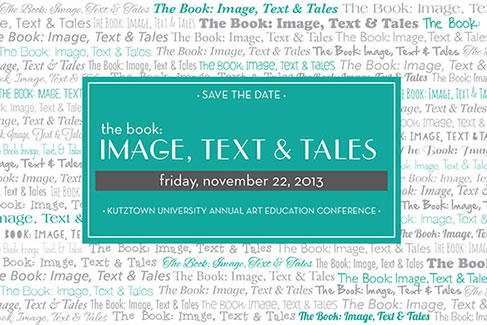
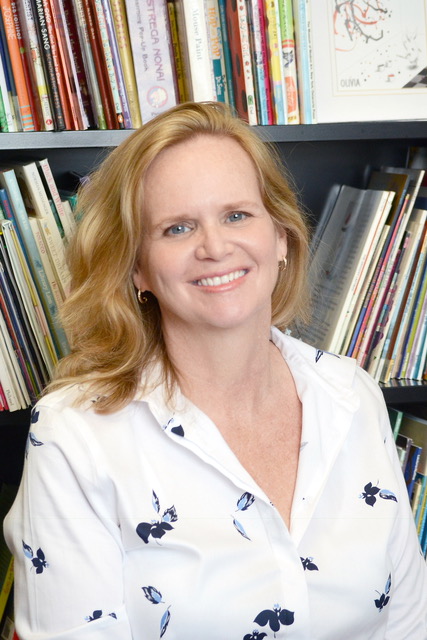
Julia Hovanec,
Conference Chairperson
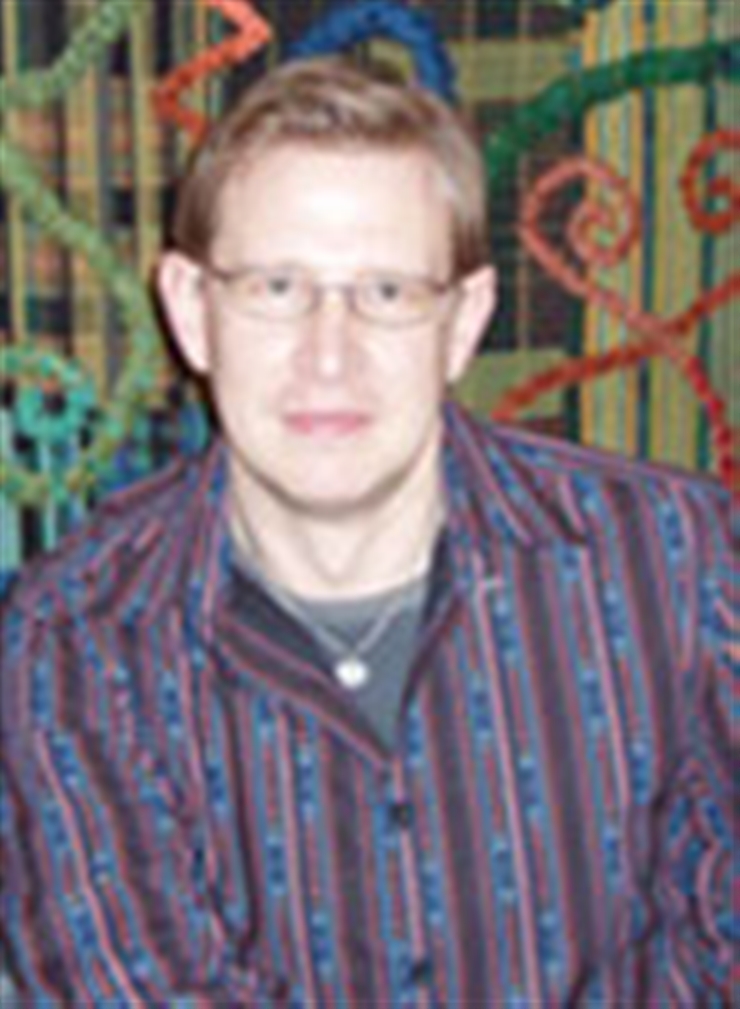
Michael Radyk,
Conference Associate Chairperson
Keynote Speakers:
David Kirk
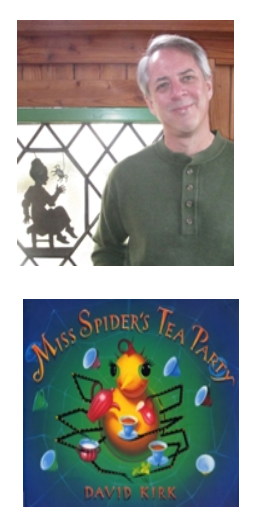
Biographical Statement: David Kirk grew up in the wild and boundless suburbs of central Ohio, where he learned about small creatures, robots, and art. As a little boy, David Kirk’s fondest ambition was to grow up to be a fluffy bunny. While waiting for his wish to be fulfilled, he has busied himself with many other worthwhile projects. He is the creator of Miss Spider, who appears in many well-loved children’s books, in her own television series, and in several popular apps. Nova the Robot and the Biddle books are also his creations. His newest book, Oh So Tiny Bunny, is published by Feiwel and Friends. An inventor as well as an author, David started several toy companies, including Ovicular Toyworks, Hoobert Toys, David Kirk’s Fun House, and the Sunny Patch brand. He lives in King Ferry, New York, with his wife Kathy and their daughters, Primrose and Wisteria. They are happily surrounded by a large and well-fed army of hamsters, chipmunks, squirrels, groundhogs, skunks, possums, deer, foxes, and most of all, bunnies.
Miriam Schaer: Book Arts Odyssey

Biographical Statement: Miriam Schaer is a multimedia book artist and also a senior lecturer in the Center for Book and Paper at Columbia College Chicago. She exhibits extensively and is represented in numerous public and private collections. She taught book arts at Pratt Institute, served as artist in residence at the Bibliotheca Alexandrina in Egypt, is included in the Brooklyn Museum’s Elizabeth A. Sackler Center for Feminist Art, was represented at the Cheongju International Craft Biennale in South Korea, and received a NYFA Artists Fellowship for her work. Ms. Schaer frequently uses garments such as girdles, brassieres, aprons and children’s' clothing as materials for unique, limited edition books. The fabrics are manipulated and embellished to serve as enclosures, within which handcrafted books and objects explore feminine, social, and spiritual issues.
A Tale of Turns, Twists, and Toppled Traditions Books existed before printing presses and after e-readers, as quill-writ edicts on sheepskin scrolls and keyboarded patterns volatile as smoke. So what, after all, is a book? Daring to go where few books have gone before, New York-based Book Artist Miriam Schaer will present examples and alternatives, from the first codices to the bleeding edge of today’s artist-inspired interpretations — as well as a selection of her own hand-made, sculptural editions. Prepare to be challenged!
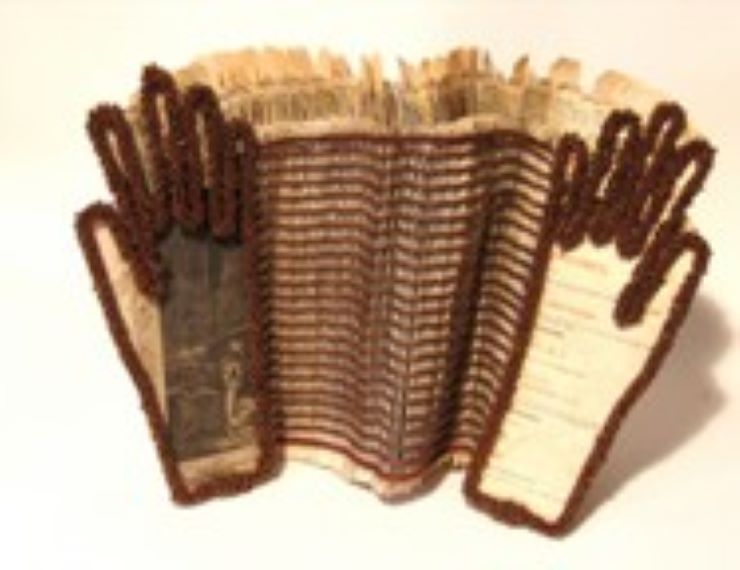
Barbara Tetenbaum
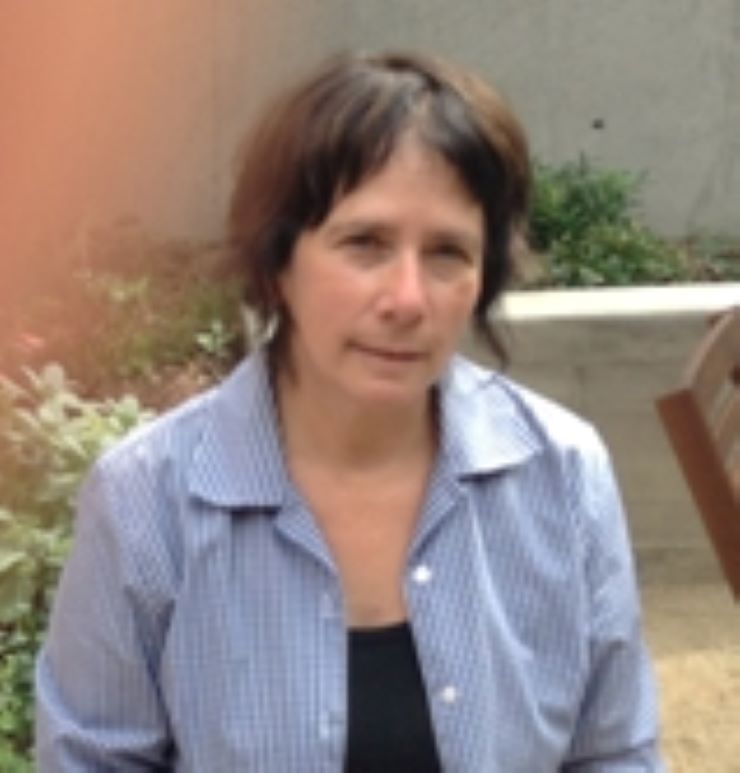
Biographical Statement: Barbara Tetenbaum is a visual artist interested in the act of reading. She works in a variety of media including artist books, prints, installation art and animation. She founded her artist book imprint, Triangular Press, in 1979. She is currently Professor and Department Head of Book Arts at Oregon College of Art & Craft. Recent honors include a 2012 Koopman, Distinguished Chair at the Hartford Art School, a 2010 Sally Bishop Fellowship at the Center for the Book in NYC and was a finalist for the 2013 MCBA Prize. She spent a recent sabbatical in Leipzig, Germany, conducting research, studying and teaching book arts. She exhibits nationally and abroad; her work can be found in many public collections. She holds a BS (Fine Art) from the University of Wisconsin-Madison and an MFA from the School of the Art Institute of Chicago.
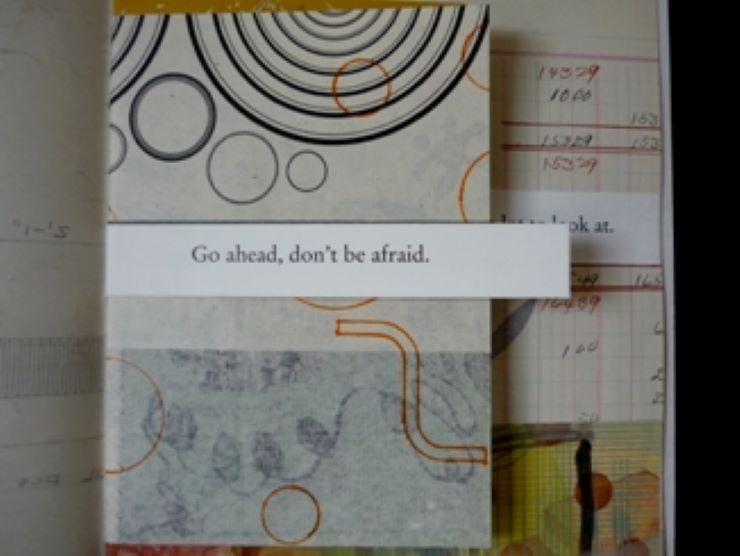
SESSIONS:
-
James Chaney
Home-made Fired Ceramic Decals: This workshop will demonstrate how to generate monochromatic ceramic decals using commercial decal paper and the standard black ink used in conventional desk top laser printers. Essentially, the black iron oxide component used in the ink cartridge oxidizes to a sienna color and fuses with a previously fired ceramic glaze. Workshop participants will collage a small tile which they can take away and fire at their own school as a test piece.
Biographical Statement: James Chaney, Professor of Ceramics, earned his B.A. in Philosophy from St. Fidelis College and M.F.A. in Ceramics from Kent State University. He has exhibited work in Mastery in Clay at the Clay Studio in Philadelphia, PA and Pennsylvania Craft at The State Museum in Harrisburg, PA. His current personal ceramic work, Sake Form Series, is fired for five days in a wood-fired Japanese-style tube kiln known as an Anagama and addresses the perennial themes of gesture, posture, irony, and humor, through the storytelling format of clay vessels, which resemble Japanese Sake bottles in size and proportion. Their hand-held scale and sensibility are central to both craft production and appreciation, particularly in the Ceramic medium. Empowered by the aesthetic and technical pioneers of the past, and acknowledging a multitude of contemporary influences, his intent in the present is to extend and expand the tradition of Ceramic Art through personal expression.
-
Heather Fountain
Exemplary Lesson Plans Three Kutztown University Art Teacher candidates will share exemplary lesson plans that connect to the theme of the conference, The Book: Image, Text & Tales. These K-12 juried lessons are perfect examples of what the students at KU are capable of when it comes to curriculum planning and development. The students will share their lessons and exemplars as well as hand out a summary lesson plan to each participant.
Biographical Statement:I have seen the power that art has to open doors to understanding and connection for those who have been bared that opportunity; whether due to limitation of access, understanding, or communication. The most significant moments of my life as a teacher, have been those when I have seen students arrive at that amazing ah-ha moment when their eyes light up with understanding. They have finally made the connection and they are as proud of themselves as you are of them. That is the power of art education.
Dr. Heather Leah Ryerson Fountain, assistant professor at Kutztown University of Pennsylvania, earned her Ph.D. in Art Education and Curriculum & Instruction from Purdue University, an M.Ed. in Education as a founding member of the Arts in Education Program at Harvard Graduate School of Education and a B.S. in Art Education with a concentration in Disabilities and a focus in Psychology from the University of Maine, Orono. She previously taught grades K-8 in the public schools, and worked with youth ages 6-21 in a psychiatric hospital day school program. She keeps her practice alive by working with youth in a local afterschool art program and teaching art classes in the summer for youth and adults with disabilities.
Currently at Kutztown University Dr. Fountain serves as the Curriculum Chair of the Undergraduate Art Education Program, as Chair of the Commission on Human Diversity, on the College of Visual and Performing Arts Curriculum Committee, as a Board member of the Women's Center and teaches art education courses such as Teaching Art, Design and Visual Culture in grades 5-8, Designing for Disabilities and Differentiated Instruction: Meeting the Needs of ALL Learners.
She is also involved at the state level as a Member of the Pennsylvania Department of Education's, Task Force on Access to the Arts for Students with Disabilities and starting in Fall 2011 will begin her term as the Higher Education Director for the Pennsylvania Art Education Association [PAEA].
Dr. Fountain consults with schools and regularly presents at state and national conferences on topics related to differentiated instruction and the use of art to teach literature instruction. She has served as an invited columnist on the use of art to differentiate literature instruction for the Association of Supervision and Curriculum Development’s [ASCD] Spotlight on Language, Literacy and Literature. Her research on differentiated instruction is also highlighted in a chapter she wrote titled, The art of portraiture, in the forthcoming text Practice theory: Seeing the power of teacher researchers. (Eds.). M. Buffington & S. Wilson McKay to be published by the National Art Education Association, 2011. Her latest book, Differentiated instruction in art will soon be published as part of the Art Education in Practice Series by Davis Publications. She also serves as an editor for a new series of art education best practice books related to differentiated instruction and teaching diverse learners. This series is expected to begin publication in 2012 through Davis Publications.
During the summer Dr. Fountain can usually be found in her favorite place, Ocean Park, Maine, where she trains camp counseling staff, leads an art camp for middle school aged youth, and works with adults with disabilities. She has worked or volunteered at the same summer camp, Camp Oceanwood, for over 20 years. When not at camp, Dr. Fountain can be seen kayaking in the salt marsh with her husband Matthew, working on her artwork or behind the counter at her family’s gift shop, Cottage Designs.
-
Moon Jung Jang
Form As Narrative This presentation examines how one visual element can lead to another in order to create stories. It explores books that are represented in both conceptual forms and in configurations of visual elements such as line, shape, texture, color, size, and value. Emphasizing the study of form and the principles of design in visual communication, this presentation will share a series of books, including self-initiated projects, the process of book making, and examples of student work from my teaching practice.
Biographical Statement: Moon Jung Jang is a graphic designer, visual artist, and teacher. Her primary research interests involve the relationship between space and configuration, visual value and relativity, and design rhetoric in visual communication. Her research has included Peripheral Vision, Disturbed Boundaries, and A Minor Arc.
Her work has appeared internationally in such exhibitions as The Tranava Poster Triennial (Slovakia); Ten Images for Ithaca (Greece); The International Poster Triennial (Japan); The International Poster and Graphic Arts Festival of Chaumont (France); 365: AIGA (New York, USA); AIGA SEED Award GALA (Atlanta, USA). She is an assistant professor of graphic design at the University of Georgia Lamar Dodd School of Art, in Athens, Georgia (USA).
-
Meg Kennedy
Book Arts in the Classroom In this high-tech age, books are still the most familiar means of presenting and conveying information. Bookmaking taps into students’ mechanical and practical skills like measuring, following directions, and sequencing. It challenges their organizational abilities, enables ownership and authorship of a project, advances literacy in young students and provides a crossover between right- and left-brain activity. A book can be a small personal gallery, a means of creating narrative art, the perfect small-scale stage for artistic experimentation. In this workshop, we’ll explore variations on several simple binding styles and ways to incorporate book arts into curricular projects, both through demos and hands-on activities. Participants will leave with a number of model books and handouts to use in the classroom.
Biographical Statement: Meg Kennedy is a calligrapher and book artist who lives in Wynnewood, Pennsylvania. After college, she worked in book publishing for 15 years as a writer and marketing associate, and pursued calligraphy and book arts as a hobby, studying with a number of distinguished American and English artists. Now working full-time as a freelance artist, Ms. Kennedy does commissioned documents and calligraphic broadsides for a variety of corporate and individual clients. In addition to making hand-bound volumes and sculptural bookworks, she has created more than 50 unique or limited edition artist’s books which incorporate lettering, illustration, painting, relief prints and collage. Her calligraphic paintings are often assemblages that use texture and pattern to communicate alongside words. She has taught for the Philadelphia Museum of Art, the PA Council on the Arts, the School District of Philadelphia, the Philadelphia Archdiocese, and has conducted numerous artist-in-residence programs at schools in Pennsylvania and New Jersey. In both local and national exhibitions she has garnered several awards, and is co-author of Building a Book, Binding a Poem: Artists’ Books in the Classroom.
For additional information:
Meg Kennedy
1408 Greywall Lane
Wynnewood, PA 19096
(610)896-8327
email: meg@book-arts.com
www.book-arts.com
-
James Malenda and Elaine Cunfer
Easy Transfer Resist Etching A hands-on workshop exploring copper etching with common household materials including inexpensive laser printer paper, a laser printer, copper, an iron, duck tape, muriatic acid, peroxide and baking soda. Each participant will create a black and white image to be transferred and etched into a copper medallion. An easy and flexible technique to create interesting metal work in the classroom.
Biographical Statement: James Malenda is currently Professor of Fine Metals and Enameling at Kutztown University where he has taught for 25 years. He received his MFA in Gold and Silversmithing from the State University of New York at New Paltz. His work is included in numerous collections including the Museum of Art & Design in New York and the Nordenfjeldske Kunstindustrimuseum in Trondheim, Norway. In 2012 his work was included in the Korean Enameling Art & Design Exhibition in Seoul, and he presented workshops at Dartmouth and the National Enameling Guild. In 2013 Professor Malenda will act as juror for the Philadelphia Museum of Art Craft Show. In 2014 Prof. Malenda will teach Enameling at Arrowmont School of Arts and Crafts.
Elaine Cunfer teaches graphic design in the Communication Design Department in the College of Visual and Performing Arts. A member of the KU faculty since 1991, she brings her experience as a professional graphic designer and illustrator for various publications into the classroom.
Among the many topics she teaches are all levels of graphic design courses including Corporate Identity, Publication Design, Editorial Design, Poster Design and Design for the Greeting Card and Gift Industry as well as sophomore level illustration and web courses.
Cunfer graduated from Kutztown University in 1983 and received her Master of Fine Arts degree from the Tyler School of Art at Temple University in 1991.
She has worked as a graphic designer/illustrator for the Raylon Corporation of Reading, Pa.; The Times Leader newspaper, Wilkes-Barre, Pa.; The Washington Times newspaper, Washington, D.C.; and as an information graphics specialist, illustrator and graphic designer for The Morning Call newspaper in Allentown, Pa.
Her illustration and design work has been published in national design journals including Print Magazine and the Society of Newspaper Design Annuals.
Included in her many interests are fine metals and jewelry design, paper engineering, and printmaking.
-
Emilie Parker
The Relationship of Word & Image in the Work of Maurice Sendak The Rosenbach Museum & Library in Philadelphia is the major repository for the illustrations and manuscripts of Maurice Sendak, creator of some of the world's best-loved contemporary children's books. The museum currently houses over 10,000 Sendak objects, including original drawings, preliminary sketches, manuscript materials, photographs, proofs, and rare prints of Sendak books. In this session, Emilie Parker, Director of Education at the Rosenbach, will give teachers an overview of the Rosenbach's collection and will present strategies for exploring the relationship between word and image with students of any age.
Biographical Statement: Emilie Parker is the Hirsig Family Director of Education at the Rosenbach Museum & Library in Philadelphia where she works to connect visitors of all ages and backgrounds to the museum's collection of fine art and rare books and manuscripts. Prior to her work at the Rosenbach, Emilie served as the Coordinator of Teacher Programs at the Philadelphia Museum of Art.
-
Amy Pfeiler-Wunder
The Art of the Book for Young Children: Participants will create two bookmaking structures using the new visual arts standards of creating, presenting, and responding as catalysts for art making. We will examine contemporary book art structures and discuss implementation of personally meaningful work through the art of the book aligned with common core language and literacy standards.
Biographical Statement: Amy Pfeiler-Wunder, assistant professor at Kutztown University of Pennsylvania earned her masters and PhD from the University of Iowa in Art Education and Teaching and Learning. While pursuing her masters and PhD she stayed active in the public schools, imagining, sharing stories, and making art with pre-K-9th grade students in various settings for thirteen years. In 2006, was recognized as Iowa’s Outstanding Elementary Art Educator. In 2007, she received the Western Region Outstanding Elementary Award from the National Art Education Association. Currently, she works as the advisor with the National Art Education Association Student Chapter Presidential Team.
Dr. Wunder’s research examines how children negotiate identity, power and class in the complex culture of the art room through the lens of class. She also examines how definitions of ‘child artist’ are negotiated in educational settings and how the art curriculum unfolds and is interpreted through the lens of socioeconomic status. She presents annually at local and national conferences and professional development workshops.
She works closely with Dr. Marilyn Stewart with The Dinner Party Institute focused on feminist pedagogy. She is currently conducting a joint research project with a Kutztown University graduate student, focused on the relationship between theory and practice in the art room. As an artist she creates artist books and collage focused on the complexities and tensions of being teacher/researcher/artist/mother/daughter/woman… When summer arrives she writes and spends time in her studio. She also enjoys playing with her spirited five-year old daughter Annabel and traveling with her partner Doug, a fine craft artist who creates titanium jewelry.
-
James Rees
Dynamic visual journaling as a diagnostic tool for student and teacher Visual journaling is a way for students to access their inner language through text and imagery that shares their journey as they seek to develop their voice creating a classroom climate where student perspectives are nurtured, aesthetic sensibilities surface and individual directions can be charted. A visual journal becomes a safe space, a verbal visual diary to chronicle the heroic journey of investigation of conceptual issues and formal preferences. Students become articulate in making significant connections between their own personal vision and the dynamic interplay of their written thoughts and imagery.
The text + image approach to journaling encourages students to become better independent thinkers engaged in personal inquiry by responding to prompts. The pages of a student’s journal begin to reveal a greater depth of investigation and process of discovery. One which both student and teacher can learn from.
Biographical Statement: James Rees has taught art for more than 21 years at the university, college and high school levels. He is passionate in his advocacy for art and art education, through balancing art education theory, research and practice.
He teaches graduate classes at Westminster College in Salt Lake City. He is a Fulbright Memorial Fund Scholar and serves on the Fulbright Alumni Board. He has also received awards from the Marie Walsh Sharpe Art Foundation, along with several residencies and fellowships throughout the United States.
He currently serves on several advisory art boards and state art education committees. He regularly does work with the Utah Arts Council, is on the board of directors for the Utah Art Festival and maintains his own studio practice.
He earned his MFA degree from the University of Arizona, and a BFA from Brigham Young University. (School of education as the out-standing art educator of the year.)
-
Laura Sapelly
The Stitched Journal: During this presentation and hands-on workshop, discover and explore the infinite possibilities stitching and textiles offers in relationship to traditional and experimental bookmaking. After viewing stitched “books” made by graduate and undergraduate students, we will construct a textile “book page,” whose content is informed by the “commonplace” book. An historical educational artifact, the commonplace book was a space where a reader copied key passages from various sources on which to critically reflect on the ideas. Open yourself up to new techniques, add to your stitching repertoire, incorporate your new skills into your existing body of work, and be inspired by your fellow stitchers. Grades 1-12.
Biographical Statement: Laura Elizabeth Sapelly’s research focuses on sewing circles and collective learning spaces. Currently, she is a Ph.D. candidate in art education and women's studies at Penn State. She earned a BFA (Fashion Design) at Massachusetts College of Art, an ALM (Liberal Arts/History) at Harvard University, and an MFA (Fiberarts) at University of Massachusetts Dartmouth. A licensed art teacher in Massachusetts, Laura has taught in a variety of settings since 1994. She wants to make textiles and collective learning/teaching environments a part of people’s lives.
-
Holly Weitknecht
Marrying Text, Image, and Theme for Student Investment: This session will explore how to develop themes, marrying words and image to spur students’ personal investment in their work. Guiding young artists to use words in their own art allows them to more fully express their ideas because they’re already well versed in written language. This capability of depth leads to investment, and subsequently, absorbing technical skills as well. We’ll examine how to choose and break down a theme into bites before building them back together for highly successful projects. Lesson ideas and examples will be shared, as well as a short, hands-on art activity to feed your own personal investment. Ahhh… art.
Biographical Statement: Holly Weitknecht received her BS and M.Ed. in Art Education from Kutztown University. She’s been teaching art in public schools since 1997, ranging all k-12 levels, (currently High School,) from art a-la-cart to brand new digs. Additionally, Holly’s published articles in School Arts Magazine, written art curriculum and AP syllabi for NAHS, served as elementary gifted teacher/coordinator and art department coordinator, and holds titles of momma, wife, artist, and big fan of lightening bug catch-and-release.
-
Peg Speirs
Video Ventures: This presentation will consist of short videos demonstrating my foray into the digital world of video editing. This led to deeper understanding of storytelling and the process of defining different narrative styles with an eye toward applications in the classroom.
Biographical Statement: Peg Speirs, Ph.D. is a Professor of Art Education in the Department of Art Education & Crafts at Kutztown University. Her areas of interest include feminist art, theory and pedagogy; issues-based art education; the intersection of art and healing; and digital storytelling. Dr. Speirs co-edited the text, Contemporary Issues in Art Education (2002). Other publications (co-authored) include an article and chapter on teaching art for social justice (2011, 2010), The Dinner Party Curriculum Project (2009), and a national study investigating curricular influences of new art teachers (2008).






